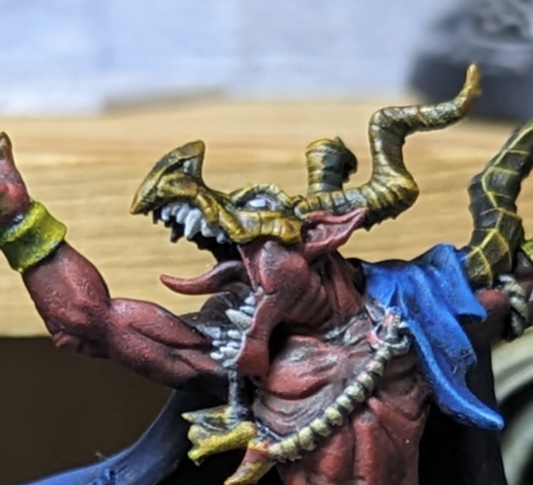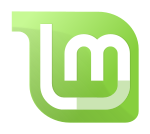

I might be wrong, but wasn’t Movit just for timeline preview, and hadn’t worked properly for quite a few versions and now you just use the NVENC/VAAPI etc export profiles to export with GPU?


I might be wrong, but wasn’t Movit just for timeline preview, and hadn’t worked properly for quite a few versions and now you just use the NVENC/VAAPI etc export profiles to export with GPU?
Though I hope to not see them, I think it’s a great idea.
Perhaps a selection of British TV or comedy characters could do the job - bouncers and policemen, detectives etc should cover the various bad/forbidden/unauthorised/not found etc.
Perhaps a Basil Fawlty attacking a bad gateway with a tree branch?


It’s a good plan, but it’s not different enough from his current appearance for anyone to notice.


There was a guy who was “famous” for having loads of plastic surgery to look like a Ken doll.
Perhaps Nigel could become “famous” for having loads of plastic surgery to look like Cyril Sneer from The Raccoons? He could carry on behaving like he already does.


I’m sure it’s not possible for everyone - but I essentially did this some years back - though more with Premiere than Photoshop - and therefore more Cinelerra/Kdenlive than Gimp/Krita.
I ran a dual boot system from about 2008 until about 2015. If it could be done in Linux/FOSS, it was. If it couldn’t, it was done in Windows/Adobe software.
I was self-employed, though I often did subcontracting work for a handful of media/umbrella organisations - so sometimes I had to use Premiere or Sony Vegas to carry on half-done projects I was handed.
Bear in mind this was when you bought Adobe software and didn’t rent it - and you could also keep running an older version for years.
Anyway, over time I used the Windows partition less and less, until I got rid of it entirely when I got a new computer.
I had to work a bit harder one year, and I did miss out on a few projects - but mostly, I could do everything I could do previously, but it took a bit longer for a while until I adjusted to a different workflow.
After that, you’re just saying “That’s a £2000 job”, “That’s a £200 job”, and meeting a deadline. Nobody really cares if it took 7 minutes longer to do, and I saved a lot of time not using Windows any more.
Editing (and other design stuff) is a far smaller part of my overall work these days, but I still do a good chunk of projects over the year, and I’ve been 100% Linux for almost 10 years. No regrets.


To a lot of laptop manufacturers, it certainly seems that way as of late - that’s why I’m ever hopeful that a modular laptop, such as the framework, might give us the option of how we want to control a mouse cursor.
That’s brilliant! Are there any other songs which do similar?


Fingers crossed for a touchpad with physical buttons.
You just understand them in your own way.
When this first came out, we interpreted it as:
Who? Who has? Who has fish? Who has fish from France?
Thank you to everyone who keeps the thing running, both in terms of technically running the instance, and those who find or create content to post :)
… and happy birthday!


This is brilliant. You’re doing a good thing for the world here. Thank you.


Is your local water company irresponsibly releasing sewage into your rivers?
Are you struggling to find an environmentally sound liquid to throw over Nigel Farridge?
I wonder if there’s some sort of solution to both these problems? Perhaps there is a way to both help remove a small amount of sewage from the river and also find something to throw at Nigel?
Hmm…


Thank you, and likewise. It’s good to know I’m not the only person using a pseudonym. I guess everyone else is using their real names :)


Personally, I’d probably prefer to see Fallout 3/4/NV converted to an isometric turn-based engine.
However, I know I’m old and have a niche opinion on such things, so I genuinely wish them good luck :)


Did you not hear about the bellend shortage?
There’s been an accident down at the knobhead factory, and output is currently so low, Britain’s news resources are in danger of failing to meet it’s quota of “knobheads and bellends saying things loudly”.
Thankfully, Nigel Farridge is there to save us.


No need to apologise! It’s great to see these all together. Really interesting models, and good to see the development and process :)
It’s easy to get a home studio, just pick a piece of furniture you don’t use any more, and get rid of it and make a tiny studio in its place. Then you allow your studio to grow until it fills the room.
Examples: “I could just sleep in a sleeping bag on the floor, then I can get rid of this bed and use the space for a studio”
“If I just eat cold food, or microwaved food, why waste space on this oven, or these cupboards of ingredients. This space could make a great studio”


I’ve previously tried to do that backwards i.e. to deliberately record the audio output as an input, so I wonder if the process would be similar… but backwards?
“Pulseaudio Volume Control” (pavucontrol) in the Mint repository should allow you to set what different audio sources are. “Monitor” is generally the “record your output sound as an input”.
There’s a bit of info on this page from thr Audacity manual: Audacity: Recording Computer Playback on Linux
Also may depend what you’re trying to put the audio in - because it may be a setting in the software (i.e. OBS/Audacity/A Steam Game) rather than the system itself.


To a degree, yes, but don’t expect magic. Some laptops have a waterproof membrane under the keyboard, so if you’re lucky, and it does, you may be able to just pop the keys off and dry the membrane out, and make sure no liquid creeps round the side into the electronics.
Otherwise you may have better odds if you open up the case and mop up any/all loose liquid you can get to with a microfibre cloth, as soon as possible, then try and let it air dry for a while.
A sealed bag with dried rice and your electronic object may absorb a bit of leftover moisture, but only to the extent that it will equal the moisture level in the sealed bag - the dried rice will gain a little extra moisture, the object will lose that bit of extra moisture.
Try to resist the urge to turn it on to check if it’s working until you’ve got all the moisture out.
Walwe